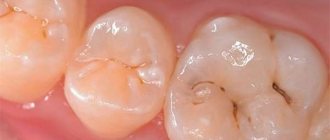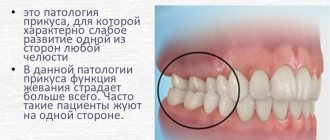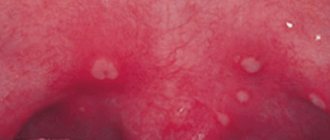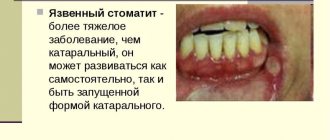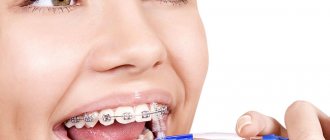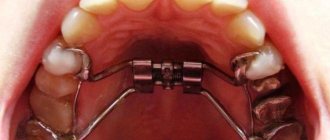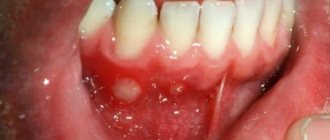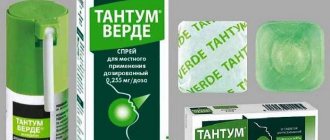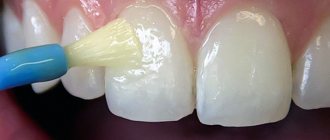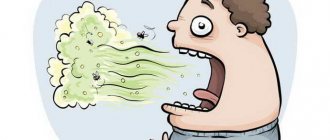What are these structures?
Plates are complex orthodontic structures of different appearance and functionality for correcting incorrect position of teeth , both in childhood and in adult patients.
Their size and shape are determined by several factors , including the nature of the anomaly, the age of the patient and the characteristics of his jaws.
Platen installation methods may also vary. Most often they are used to correct minor changes in the position of teeth. In addition, it must be added that the earlier the treatment process begins, the more effective it will be.
Device and principle of operation
Despite the existing differences in the structure of orthodontic plates, they all have a similar design and main structural components. The base is a plastic base. It is connected in a certain way to metal arches of various configurations.
It is these arcs that serve as the main acting force for adjustment. In addition, the design also includes fasteners that serve to hold the plate in the correct position on the patient's jaw. Fastenings can be in the form of hooks.
In some types, in addition to this, a special screw is also required, which activates the device using a key.
The principle of action is to apply constant, low-intensity pressure to the dentition, returning it to the correct position or preventing the situation from getting worse.
Children's dental roots cannot be damaged because the pressure is very low.
Prescriptions and contraindications
The huge advantage of orthodontic plates is that, despite their simplicity, they have a fairly wide range of options for use at a fairly low cost.
- Changing and correcting the shape of the jaw bones.
- Palate width correction.
- Consolidating the results of adjusting the position of teeth after removing braces.
- Preventing possible tooth displacement.
- Keeping jaws and teeth in their normal natural position.
- Stimulation or retardation of jaw growth.
- Relieving the dentition from pressure that can be exerted by the cheeks and lips.
- Widening of interdental spaces (baby teeth) to prevent torsion.
The list of contraindications is long at first glance. However, most of them are quite rare.
- Mental illnesses.
- Aggravated stage of periodontitis.
- Lack of proper oral hygiene.
- Allergic reactions (in this case, metal intolerance).
- Patient refusal of treatment.
- Some severe respiratory diseases.
Broken tooth plate
My son (8 years old) wears dental plates; yesterday, while brushing his teeth, we saw that the plate did not have a tendril.
The son cannot say how it broke off - either he swallowed it, or it fell off during cleaning. Our doctor is on vacation. What should we do? Thank you! Good afternoon. You need to contact an orthodontist at any dentistry and order repair of your plate. Dear mother, if the plate is fixed, then I recommend waiting for your doctor; the clasp is not important in its action. All the best.
We recommend that you read:
Contact phone number
Comments and reviews 39
The colored plastic broke off from the record. Can I continue to use it? Answer
My son’s loop-shaped hook (clasp) broke off on the side of the plate. He doesn't know how it happened. He says he's not worried about anything. If he swallowed it, is there any danger? What to do? Answer
It is necessary to observe that the clasp should come out naturally through the intestines. If acute abdominal pain suddenly appears, consult a gastroenterologist. Answer
General dentist
The screw fastening broke off from one half. Can I glue it together with something myself or take it to the doctor for repairs? Answer
No, you won’t be able to fix the fastening (clamp) yourself. You need to see a doctor. The dentist will make an impression with a plate and give the device to the technician for repair. Answer
General dentist
The child carried the record for 6 weeks. We went on vacation, and on the very first day the record broke, the metal front arc cracked. What to do? We will see our doctor no sooner than in a month. Answer
If the device cannot be worn (poor fixation or a broken element rubs the mucous membrane), then it is better to contact an orthodontist at your location. Answer
General dentist
I'm worried that the mount on the plate on the left side has broken, but everything is holding together well. Also, the left side puts a little more pressure on the jaw and teeth and the two attachments are different from each other. Does it need to be repaired? Answer
It is necessary to clinically evaluate the fixation conditions; if the load is distributed unevenly, then it is better to repair the device. Answer
General dentist
Please tell me if the plates in children are broken: in one the plastic itself has broken off, in another there is a metal arm on the side, is it necessary to bring children to the appointment? Or you just need to bring the plates and they will be taken away for repair (if possible, of course). Thank you! Answer
It is imperative to contact an orthodontist with children. The doctor will take impressions of the plates and send the device to a dental laboratory for repair. Answer
General dentist
Adams' right clasp broke. This is not the first time the plate has broken; the orthodontist said that if it breaks again, a new one will have to be made. Tell me, please, is it possible without this clasp? Answer
Read also: I got braces, my teeth don’t hurt
This clasp plays a very important role in fixing the lamellar apparatus. Some techniques in certain situations can make a semicircular clasp instead of Adams, but fixation with this clasp suffers a little. Answer
General dentist
Is the plate in front broken or not? Answer
Looks like no. The cut has expanded. Answer
General dentist
The record broke. Is it possible to repair or do I need to buy a new one? Answer
Adams clasp is broken. You need to contact your treating dentist - orthodontist. If the fixation of the plate is good, then you can simply cut off the clasp and continue wearing the device. If the fixation is insufficient, then repairs can be made. If you are not currently wearing the plate, then it must be stored in water, otherwise it simply cannot be stored, and then a new device will definitely need to be made. Answer
General dentist
Hello, my daughter has a broken plate, a piece of hardware on the left side. She found a place for it (my daughter attached it where she broke it, on a small piece of debris). Can it be repaired? Answer
Yes, if the clasp is broken, then the plate apparatus must be repaired. Answer
At what age can you wear it?
The most optimal age when an orthodontist can prescribe wearing plates is about 5–6 years. This age can be extended to 10–12 years. 5 years is the recommended, but not always the limit norm. Despite the fact that children's dentition has not yet been formed, anomalies in its development may appear earlier.
If there is a special need, the dentist can recommend one of the gentle plate options before the age of five – at 3–4 years. Here everything depends on the expected result - how great the benefit from the orthodontic apparatus will be.
Types for adults
In most cases, adult patients are prescribed single-jaw plates. Occasionally, arm-shaped structures may also be used.
Single jawed
The plate base of the structure is supplemented with special orthodontic screws. When tightened, they allow the device to exert directed and adjusted pressure. mainly used for narrowed or shortened dentition , as well as in case of deformation of some teeth.
photo: colored single-jaw plates
The cost depends on the number of screws with which the structure is equipped. A plate with one screw costs about 7–9 thousand rubles, and each screw costs from 1000 to 1300 rubles.
With retraction type arc
It consists of the retraction arch itself (vestibular, that is, external) and the obligatory plastic base. The operating principle of this device is based on the fact that the wire included in the structure can spring. Due to this, the position of the teeth during a protrusive bite is corrected.
photo: plate with retraction type arc
Estimated cost – 7000 rubles.
With a hand-shaped process
The basis of the design - the plate base - is complemented by a hand-shaped process, which is used to exert pressure on the required tooth in the area of its neck for greatest efficiency . The action is based on the elasticity of the wire from which the appendage is made.
photo: plate with a hand-shaped process
The approximate price is about 7 thousand. At the same time, the cost of manufacturing one appendage is about 400 rubles.
Bruckle apparatus
The base is the same plate base for the lower jaw. It is complemented by an inclined plane in the area of the anterior teeth and the retraction arch. Makes it possible to move the front teeth using the masticatory muscles and a springy retraction arch.
photo: trouser apparatus
Price – about 10 thousand rubles.
Advantages and disadvantages
Dental plates have numerous advantages over other orthodontic structures:
- High comfort and aesthetics. The patient gets used to the system in a couple of days. It is almost not felt in the mouth, it can be removed while eating, playing sports, and performing hygiene procedures. Also, the device is hardly noticeable to others.
- Fast production. On average, the mechanism is made a week after taking impressions, while other orthodontic devices take up to a month.
- Easy installation. Directly attaching the system takes 10 minutes. The procedure is completely painless.
- Easy care. Even elementary school students can keep the plate clean.
- Low price. The cost of the system in Moscow dentistry averages 8 – 10 thousand rubles.
- Rare visits to the dentist. To correct the device, doctors are visited on average 3 times less often than when wearing braces.
However, there are also significant disadvantages:
- the plate is not suitable for correcting serious defects;
- almost never used for adults;
- due to the fact that the structure is easily removable, increased control is necessary so that the child does not pull it off on his own;
- Allergic reactions to plastic or metal are occasionally possible;
- With insufficient hygiene, gum inflammation develops, which turns into gingivitis and periodontitis.
The device is easy to put on and take off.
Additional Information! It is necessary to ensure that the child does not play with the mechanism. Children quickly get used to removing and putting on the plates with their tongue.
Types for children
For children's teeth, all types and types of structures that are listed above are used.
Frenkel apparatus
Consists of plastic lip pads and cheek shields (2 of each element). They are connected using a durable metal frame, which can take the form of a palatal clasp, lingual or vestibular arch. Moves the anterior teeth using a springy retraction arch and masticatory muscles.
photo: Frenkel apparatus
Price – from 11.5 to 22 thousand rubles.
Andresen-Goipl activator
Consists of two base plates connected into a single block. May have screws, retraction arch, and other components. Helps activate jaw growth if necessary, uncouples the bite, and also returns individual teeth to their correct position.
photo: andresen-goipl activator
Price – from 12 thousand rubles.
The cost of each type in this case may be even higher than for plates for adults. This occurs due to the child’s choice of the pattern configuration and the variety of colors that will be present on the plate base of the device.
Modern technologies make it possible not only to make the plate itself multi-colored, you can also add glitter, all kinds of decorations and designs to the plastic.
The average cost of a plate for one jaw will be about 8 thousand rubles. But a simple plate for one jaw without additional functional elements, such as screws, costs about 3-4 thousand.
Reviews of vestibular plates manufactured by DentaGuard dentistry
Patients who wear the plates themselves or have installed them for their children are happy to leave feedback about the sensations. On our website we publish them along with photos before and after wearing dental plates.
A correct bite is not only a beautiful smile and self-confidence, but also one of the foundations of our health. It is worth paying attention to this nuance from a very early age. A baby’s bite is formed from the first days of life, and ensuring that this process goes correctly is the responsibility of every parent. DenaGuard is a clinic that will be with you from your baby’s first baby tooth and take care of the dental health of the whole family!
How to install?
After the initial examination, an x-ray is taken, without which it is impossible to prescribe the wearing of orthodontic appliances . If it is necessary to use orthodontic plates for correction, the doctor follows a certain algorithm.
- Before installation, the plate must be manufactured. Since these devices must be strictly individual, it is necessary to make an impression of both jaws of the patient.
- A primary model is then made from plaster and tried on to eliminate even the most minor discrepancies.
- The model serves as the basis for the manufacture of both the plastic base of the plate and other parts. The shape of the plastic should repeat in great detail all the individual features of the palate, as well as the contours of the teeth and gums.
- The penultimate stage is the fitting of the finished product, based on the results of which the doctor can make its correction.
- Since the plates are removable structures, their direct installation does not cause problems. However, the first installation at the dentist's office is important, as the dentist will teach you how to put on and take off the appliance yourself so as not to damage it or harm your teeth.
Plate settings and their effectiveness
There is a standard scheme according to which the doctor installs the plates. The patient must first undergo an x-ray. This is necessary in order to correctly manufacture the plate, taking into account the individual structure of the jaw and the location of the teeth.
The second stage involves taking an impression. A plaster model is made from it. Next, the specialist makes a design that will completely replicate the relief of the teeth and jaw.
The metal arch is almost always located in the front; its exact position is selected individually for the patient. The doctor must provide all the necessary information on the care and wearing of the device.
Only a doctor can answer the question of how long plates are worn on teeth, based on a specific case. According to statistics, this method of correcting the bite is effective in 8 cases out of 10. The result also depends on the patient himself and his age at which treatment was started. Straightening your teeth can take several years.
Is it painful to wear?
Patients do not experience severe pain even during the adaptation period - for several days while they get used to the orthodontic apparatus. However, many may experience quite severe discomfort. In this case, discomfort is almost always associated with the presence of a foreign solid object in the mouth.
Basically, all unpleasant sensations go away in a maximum of a week and a half. However, in cases where wearing is not indicated constantly, but only for a certain number of hours during the day, addiction can extend over a longer period.
Do records have any disadvantages?
Unfortunately, there is. Since the design is removable, it is important to monitor how responsibly the child approaches the doctor’s recommendations. For effective treatment, you need to wear the device for at least 18 hours, and ideally constantly (the only exceptions are brushing your teeth and eating). If your child shoots a record in kindergarten or at school, achieving the desired result will not be easy.
The first days after installation of the plate may be uncomfortable for the child. A foreign body in the mouth affects taste and diction, and there is also a slight aching pain due to pressure on the teeth. But, as a rule, after 2-3 days the little patient gets used to the device and does not experience discomfort.
How long should I wear it?
The period of wearing orthodontic plates is individual for each patient. In most cases, the wearing time depends on the complexity of the problem that the device is intended to solve.
Before starting treatment, even an experienced doctor can only give an approximate time. In this case, the exact time of removal can only be determined during wearing , when the first results begin to appear.
The average period is about one and a half years. However, it can vary from about a few months to 2–3 years. The plates themselves may also change during the treatment process, depending on the results obtained and how the current situation has changed.
How to care for records?
To prevent microbial contamination in the intervals between wearing, you need to buy a container for storing the dental plate. This is a small box, shaped like a jaw, which is inexpensive regardless of where it is purchased.
Any toothbrush and non-abrasive toothpaste are perfect for daily hygiene. Sometimes it is recommended to clean the structure in an oral antiseptic solution.
Wearing instructions and care
The plates, although simple in design, still require patients to comply with certain rules . Moreover, they concern both recommendations for wearing them and caring for the devices themselves and teeth.
- When eating, no matter how often it occurs, the structure must be removed.
- After eating and before putting on the device, be sure to thoroughly brush your teeth and rinse your mouth.
- It is imperative to follow the recommendations of the attending physician regarding the wearing time per day. Some types require constant wear, while others are worn only at night or for a few hours during the day.
- In addition to following the rules of oral hygiene, you also need to take care of the plate. It requires daily cleaning with a separate brush and deep weekly cleaning using special products and gels.
- In case of breakdown or damage, it is recommended to immediately consult a doctor for repair or manufacture of a new device.
Orthodontic equipment for teeth straightening and bite formation
There are several tools to straighten your teeth and form your bite:
- Trainers;
- Braces;
- Plates for teeth straightening.
Trainers
Most orthodontic devices designed to correct malocclusion eliminate the consequences of the pathological process, without excluding its cause. A dental trainer is a device that performs both tasks. Wearing trainers helps develop the jaw muscles, reduce pressure on the jaw bones, restore breathing through the nose and correct tongue position. Suitable for treating children from 5 years of age. They are especially effective when replacing baby teeth with permanent ones to correct their incorrect position. Wearing time is limited to night and a few hours during the day.
An impression is not required for production. Transparent silicone is used in different colors to make them more interesting for children to wear. Adapts well and does not affect diction. It is used for minor bite deviations, and can even replace braces if there are contraindications to wearing them.
First, trainers with soft silicone are used. Later, more stringent ones are used. Used for: deviations in tooth growth (location, direction, etc.), impaired swallowing function, pathologies of the oral cavity leading to chronic nasal congestion. They require daily care just like all devices.
Braces
Braces are special linings for each tooth, which are strung on a rigid metal arch. The main qualities of the arc:
- Strength;
- Elasticity;
- Availability of shape memory. No matter how the wire is bent during the treatment process, it tends to take its original shape.
Braces are the most common way to correct malocclusions. Starting from the age of 12 (the average period for the final eruption of permanent teeth), they can be installed in children. Braces are a non-removable device. They are attached to each tooth. Wearing them requires regular visits to your doctor, who determines and regulates the tension of the wire. When wearing braces, they are quite noticeable, and this affects the teenager’s behavior (they become more shy, tense and smile less often). The use of braces requires increased attention to oral hygiene (food gets stuck in the system) and imposes restrictions on the consumption of certain foods (hard and viscous). But despite the disadvantages, this is a very strong and durable design that allows you to eliminate many bite defects.
The use of braces requires increased attention to oral hygiene
Retainer
A retainer (in this case, a permanent retainer) is a thin wire made of the same material as the bracket arch. It is not an independent orthodontic device, but serves to prevent aligned teeth from returning to their original place. It is usually installed before removing braces, so we decided to mention it. It is not noticeable to others because it is attached to the inside of the jaw, where it is secured with dental cement that hardens under the influence of ultraviolet radiation. It is almost impossible to tear off, so there are no restrictions on eating hard and sticky foods.
What results can be achieved?
Sometimes the use of plates in childhood precedes the subsequent installation of braces. However, in most cases, with the help of such orthodontic appliances, it is possible to avoid treatment with fixed structures or make it shorter.
The sooner you start correcting your bite, while the dentition is easily corrected, the greater the likelihood of a complete recovery.
In adults, the result, at first glance, is less noticeable. Especially when the plates are used as retainers, holding teeth in the correct position after removing the braces. However, these structures prevent repeated changes in the bite and allow a person to live a full life .
What is better or worse than braces?
It is hardly worth comparing braces and orthodontic plates, since they perform different functions and have different indications for installation . At the same time, we can name the advantages and disadvantages of the plates, which will help many patients make their choice.
Advantages:
- the possibility of installation in childhood, when the jaw system is not yet fully formed;
- often shorter wearing period;
- removable design gives more freedom and comfort to the patient;
- do not cause pain.
Flaws:
- cannot be used in complex cases of malocclusion;
- it is not possible to make precise adjustments to the position of each tooth;
- cannot always help adult patients, since their tooth mobility is greatly reduced due to the completion of the formation of the dentofacial system.
Manufacturing and fastening
Teeth straightening plates are made of high quality medical plastic. This material does not cause allergies and does not injure the oral cavity. The metal arc is made of an alloy of nickel and titanium.
Titanium is a popular material in the manufacture of dentures; it is highly durable, unaffected by temperatures and acids, and is known for its hypoallergenic properties.
The plates are made in accordance with the anatomical structure of the jaw, the position of the teeth in the row, and the severity of the deformation. The manufacturing process may take some time, as fitting or additional correction is required before installation.
Only after making the ideal molds does the doctor begin installation. All preparation looks like this:
- Taking an x-ray. A photograph of the jaw is important for a clearer picture of the patient's teeth and other jaw defects.
- Cast. The impression allows you to make a model from plaster that is identical to the anatomical structure of the patient’s teeth.
- Manufacturing. The plate is made of medical plastic based on the existing plaster model.
After the plate has been successfully installed in the mouth, the patient may feel discomfort for some time when eating or talking.
After a week, such sensations disappear and the presence of the plate in the mouth is practically not felt. It is important to follow all hygiene rules and monitor the integrity of the structure.
Learn more about getting metal braces and their benefits. Read here useful information about Acri-free dentures.
At this address https://dr-zubov.ru/ortopediya/semnye-protezy/nejlonovye/babochki.html you will find interesting information about removable butterfly dentures.
